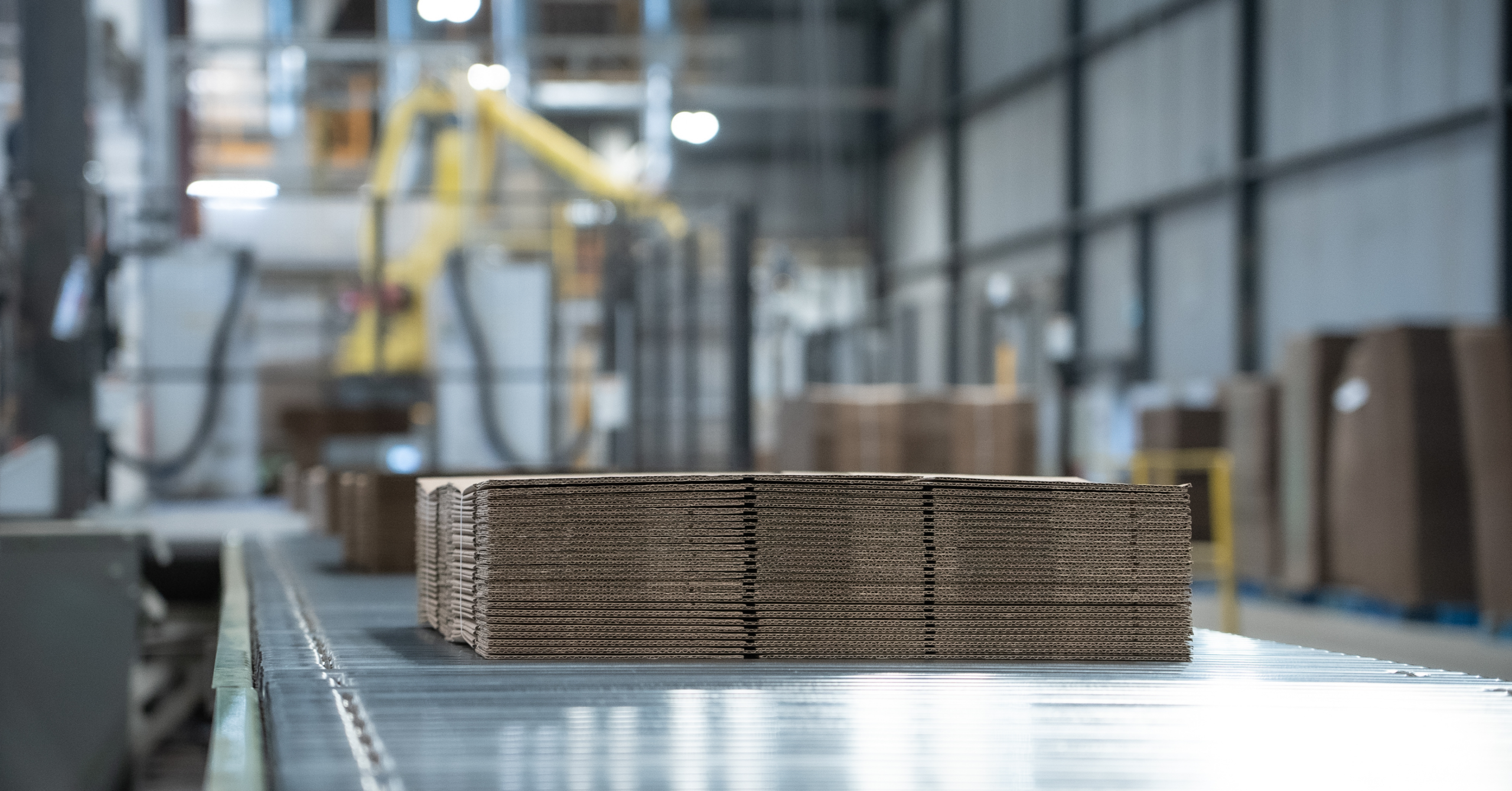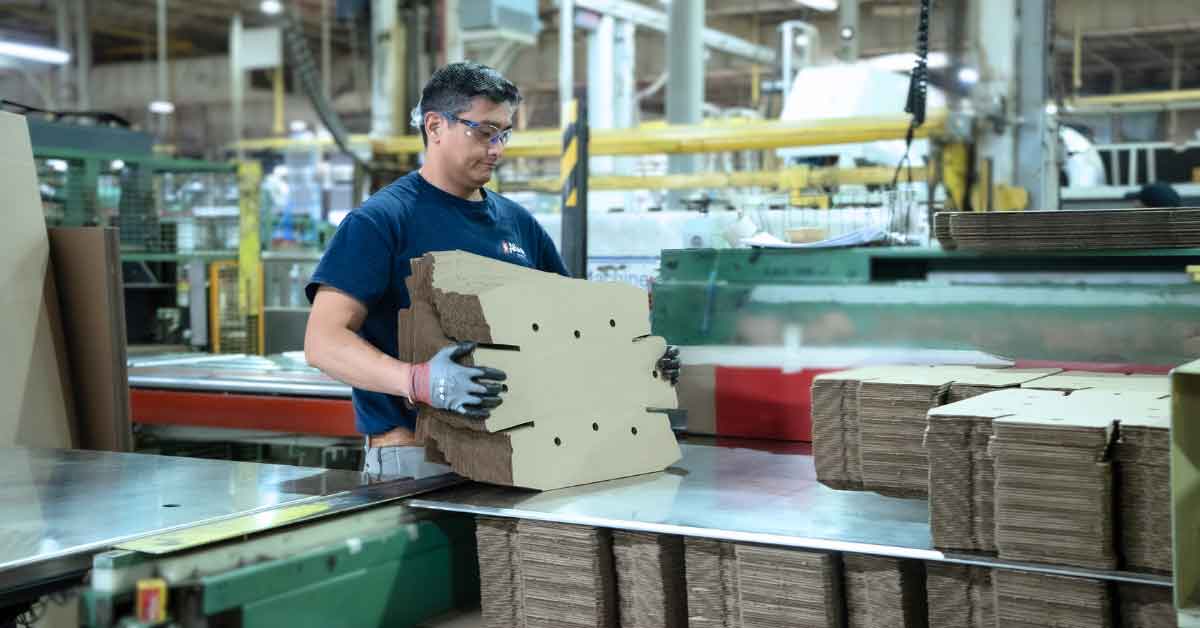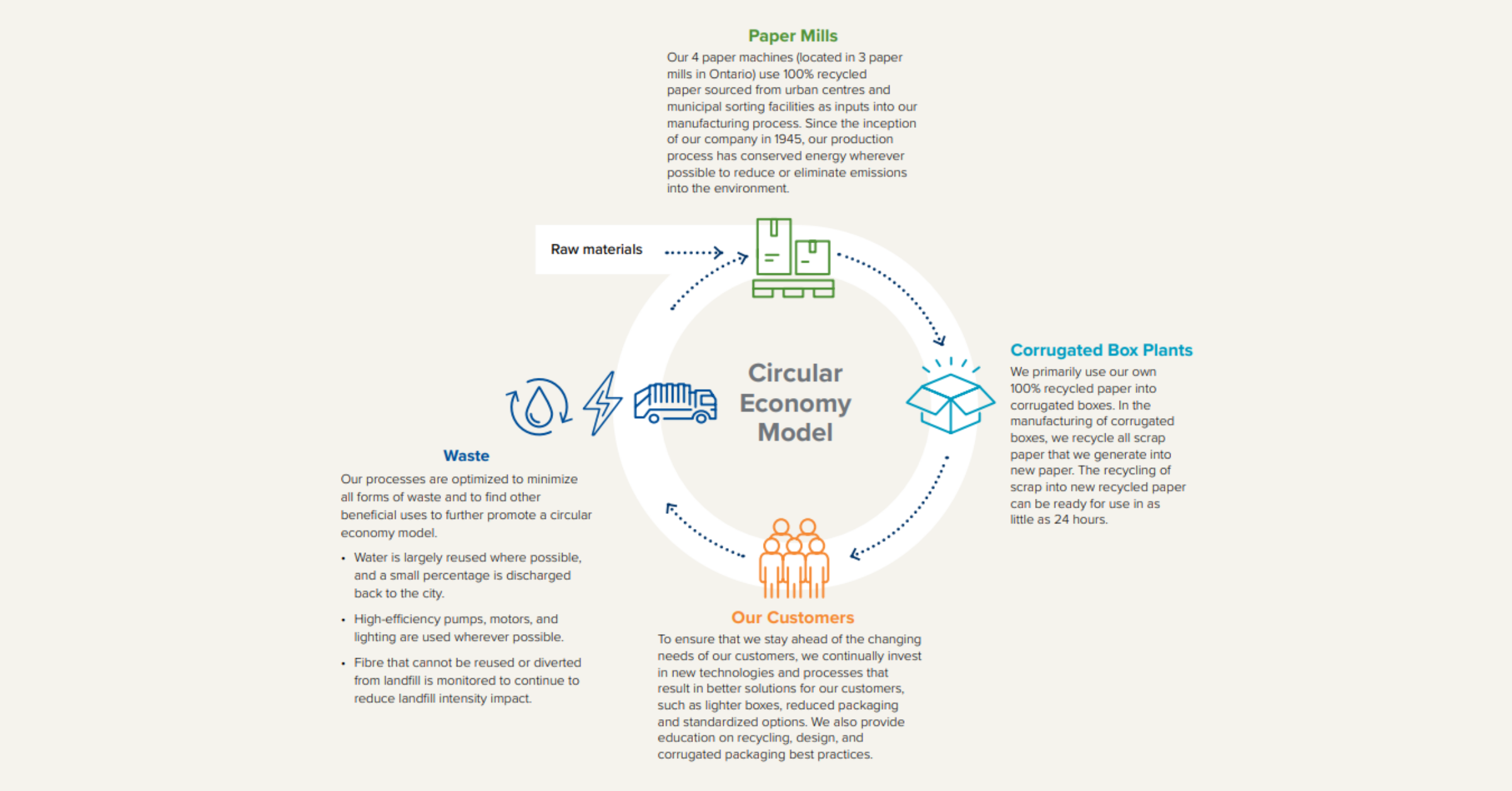Contact Us
or call us now 800.268.5620
or call us now 800.268.5620

Corrugated boxes are more than just containers; they are at the heart of sustainable packaging. Lightweight, durable, and fully recyclable, they represent how industries worldwide are redefining packaging to align with a more sustainable future.
Once viewed simply as disposable shipping containers, corrugated boxes have become symbols of circular design. Instead of the old “make, use, dispose,” our approach today follows: reuse, conserve, and reduce materials and energy. This shift ensures we maximize resources while minimizing waste.
Beyond functionality, corrugated packaging has become a choice that resonates with conscious consumers. Its natural look, versatility, and environmental benefits make it an attractive option for businesses across sectors.
No longer limited to shipping, corrugated materials now feature in retail displays, product packaging, event installations, and even modern furniture. From branded booths to creative shelving, companies are using corrugated designs to showcase both creativity and commitment to sustainability.
This evolution shows that sustainable packaging is not just about reducing waste, it’s about transforming everyday materials into solutions that are practical, appealing, and aligned with environmental responsibility.

The foundation of every corrugated box begins with pulp, sourced either from virgin fiber or recycled paper. Businesses choose based on their strength requirements, sustainability goals, and cost considerations.
A corrugated sheet is made of three essential components:
This simple yet innovative structure makes corrugated boxes both sturdy and resource-efficient.
Turning raw materials into corrugated boxes involves a precise sequence of steps:
The result is a packaging solution tailored to diverse industries, strong enough for shipping, adaptable enough for retail, and sustainable by design.
Once manufactured, corrugated boxes take on their vital role: protecting products in transit. Their stackability and durability make them the preferred choice across global supply chains.
Lightweight construction also reduces carbon emissions, a win for both businesses and the environment.

The lifecycle of a corrugated box does not end once it reaches its destination. Many boxes are repurposed for storage or reused in business operations. In fact, companies committed to sustainability often integrate corrugated reuse into their logistics, extending product life and reducing reliance on new raw materials.
At the consumer level, corrugated boxes are frequently reused for organization, storage, or shipping, illustrating their versatility.
When a box has served its purpose, recycling ensures that it is re-entered into the circular economy. The process is straightforward:
Corrugated fibers can be recycled multiple times without losing their strength, thereby extending their useful life and conserving natural resources.
The benefits of recycling are clear:
Each recycled box represents a tangible step toward climate responsibility.
Atlantic Packaging Products has emerged as a leader in sustainable packaging solutions, emphasizing innovation and environmental stewardship. By integrating recyclable and compostable materials across their product lines, the company actively supports the shift toward a circular economy. Our commitment to transparency and collaboration with businesses ensures tailored solutions that meet both environmental goals and functional needs, setting a benchmark for the industry.
© 2025 Atlantic Packaging Products Ltd. All rights reserved.
Atlantic Packaging Products
We firmly believe that the internet should be available and accessible to anyone, and are committed to providing a website that is accessible to the widest possible audience, regardless of circumstance and ability.
To fulfill this, we aim to adhere as strictly as possible to the World Wide Web Consortium’s (W3C) Web Content Accessibility Guidelines 2.1 (WCAG 2.1) at the AA level. These guidelines explain how to make web content accessible to people with a wide array of disabilities. Complying with those guidelines helps us ensure that the website is accessible to all people: blind people, people with motor impairments, visual impairment, cognitive disabilities, and more.
This website utilizes various technologies that are meant to make it as accessible as possible at all times. We utilize an accessibility interface that allows persons with specific disabilities to adjust the website’s UI (user interface) and design it to their personal needs.
Additionally, the website utilizes an AI-based application that runs in the background and optimizes its accessibility level constantly. This application remediates the website’s HTML, adapts Its functionality and behavior for screen-readers used by the blind users, and for keyboard functions used by individuals with motor impairments.
If you’ve found a malfunction or have ideas for improvement, we’ll be happy to hear from you. You can reach out to the website’s operators by using the following email
Our website implements the ARIA attributes (Accessible Rich Internet Applications) technique, alongside various different behavioral changes, to ensure blind users visiting with screen-readers are able to read, comprehend, and enjoy the website’s functions. As soon as a user with a screen-reader enters your site, they immediately receive a prompt to enter the Screen-Reader Profile so they can browse and operate your site effectively. Here’s how our website covers some of the most important screen-reader requirements, alongside console screenshots of code examples:
Screen-reader optimization: we run a background process that learns the website’s components from top to bottom, to ensure ongoing compliance even when updating the website. In this process, we provide screen-readers with meaningful data using the ARIA set of attributes. For example, we provide accurate form labels; descriptions for actionable icons (social media icons, search icons, cart icons, etc.); validation guidance for form inputs; element roles such as buttons, menus, modal dialogues (popups), and others. Additionally, the background process scans all the website’s images and provides an accurate and meaningful image-object-recognition-based description as an ALT (alternate text) tag for images that are not described. It will also extract texts that are embedded within the image, using an OCR (optical character recognition) technology. To turn on screen-reader adjustments at any time, users need only to press the Alt+1 keyboard combination. Screen-reader users also get automatic announcements to turn the Screen-reader mode on as soon as they enter the website.
These adjustments are compatible with all popular screen readers, including JAWS and NVDA.
Keyboard navigation optimization: The background process also adjusts the website’s HTML, and adds various behaviors using JavaScript code to make the website operable by the keyboard. This includes the ability to navigate the website using the Tab and Shift+Tab keys, operate dropdowns with the arrow keys, close them with Esc, trigger buttons and links using the Enter key, navigate between radio and checkbox elements using the arrow keys, and fill them in with the Spacebar or Enter key.Additionally, keyboard users will find quick-navigation and content-skip menus, available at any time by clicking Alt+1, or as the first elements of the site while navigating with the keyboard. The background process also handles triggered popups by moving the keyboard focus towards them as soon as they appear, and not allow the focus drift outside it.
Users can also use shortcuts such as “M” (menus), “H” (headings), “F” (forms), “B” (buttons), and “G” (graphics) to jump to specific elements.
We aim to support the widest array of browsers and assistive technologies as possible, so our users can choose the best fitting tools for them, with as few limitations as possible. Therefore, we have worked very hard to be able to support all major systems that comprise over 95% of the user market share including Google Chrome, Mozilla Firefox, Apple Safari, Opera and Microsoft Edge, JAWS and NVDA (screen readers).
Despite our very best efforts to allow anybody to adjust the website to their needs. There may still be pages or sections that are not fully accessible, are in the process of becoming accessible, or are lacking an adequate technological solution to make them accessible. Still, we are continually improving our accessibility, adding, updating and improving its options and features, and developing and adopting new technologies. All this is meant to reach the optimal level of accessibility, following technological advancements. For any assistance, please reach out to
